Art Gallery: Blue Period
Blue Period
Light blue usually relates to the sky and ocean and gives people a chill. However, dark blue often refers to rainy days, depression, horror, silence, and unpleasantness. Nevertheless, dark blue is the central theme of Picasso's Blue Period. The sad tone came from the suicide of Picasso's best friend, Picasso was only 19 at that time, and he was not psychologically ready to deal with the surprise and tragedy. For him, he paints the lament on canvas to moan about the death of his friend. "It was thinking about Casagemas that got me started painting in blue," Picasso later told his friend and biographer Pierre Daix. As an art genius, using dark color as blue adds a melancholy to his artworks. Ingo F. Walther writes in his book, "The choice of colour has become an independent stylistic device, signalling above all that the pictures are no mere reproductions of reality," Picasso's work during the Blue period is similar to Monet's pieces, which is impressionism.
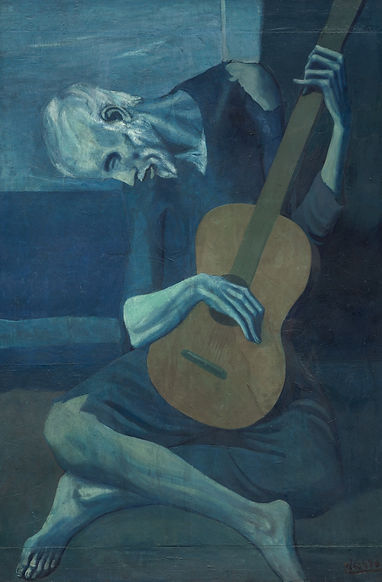
The Old Guitarist, late 1903-1904
During his Blue Period, the artist limited his color palette to cold and monochromatic blues, flattened the forms, and explored emotional and psychological themes related to human suffering and alienation. Many people Picasso get inspiration from Hope by English painter George Frederic Wallace. The main subject of the painting is the skinned older man; he looks unhealthy because of the absence of flesh. His head is down, his eyes blind, looks dying. The blue tone makes the painting even more depressing. The blind eye of the older man puts him in solitude, it seems nobody wants to approach him, and he doesn't have any relatives to care about him. It is such a depressing scene when people see an elder have to play music to earn pennies to survive ("Pablo Picasso's Old Guitarist").
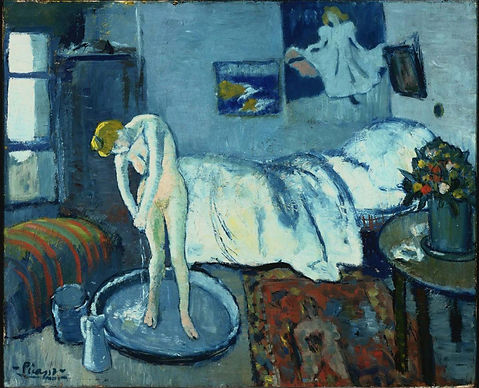
The Blue Room, 1901
The Blue Room depicts another scene of humans in solitude. The room is not empty yet, only a woman taking a bath, and the blue tone of sadness makes us think she is lonely. In this painting, the woman can be seen bathing in water from a basin, which indicates that her family is not well off. Picasso's paintings in the Blue Period are all created around the point of "poverty." In addition to the dominant blue color, the sunlight pours in from outside the window, adding a bit of warmth to the cold painting. The girl in Picasso's brushstroke stands right in the sunlight, reflecting the natural beauty of her naked body (Richman-Abdou).

The Tragedy , 1903
Picasso titled the painting "Tragedy," but there are no paintings about illness, death, or people crying. The image is of a family standing on the beach. The adults seem to have suffered a setback by hanging their heads in despair. The plain clothes indicate that the family is not well off. And the adults' hands, hunched over their chests, tell the reader they are now standing in the middle of a cold wind. “Decent art resonates with our own human nature and the world in general. Moreover, it points out our personal weakness, personal failure and moral evil without shying away” ("The Tragedy").
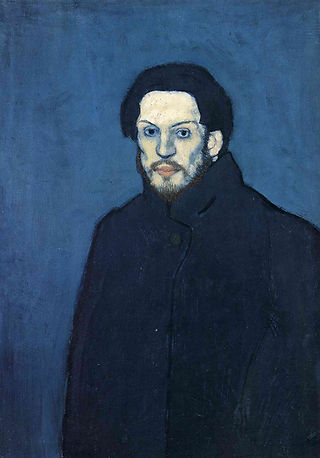
Self-Portrait, 1901
Self-portrait of Picasso. He had a beard at the time, which made him look more weathered than at other times.

La Célestine, 1904
An old woman with half a blind eye. This is the work he created in Barcelona.

The Death of Casagemas, 1901
Like Picasso, young Casagemas was an artist, and he soon became close friends with Picasso after they first met. They traveled to Paris, as most artists would do, to find romance and inspiration for the arts. Casagemas falls in love with a young model named Germaine. However, the feeling is not mutual; Poor Casagemas was so deeply involved in this fruitless love affair that it caused him to develop a psychological disorder. Depressed for a while, he tried to commit suicide to get rid of it. After being rejected several times, Casagemas committed suicide with a pistol. Picasso lost his best friend ("The Death of Casagemas").
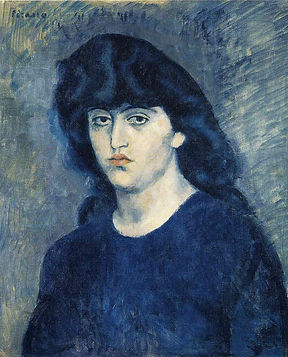
Portrait of Suzanne Bloch, 1904
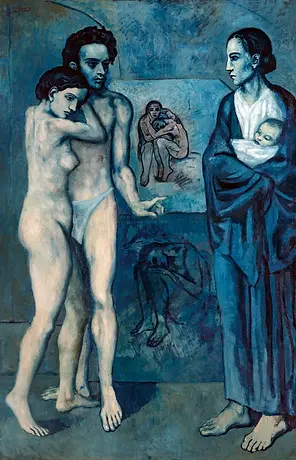
La Vie, 1903
The wall painting in the back is an intriguing element in La Vie. The people in the painting distort unnaturally, as if tormented by suffering. In Picasso's painting, the man seems to be caught cheating outside. He was questioned before he got dressed with his mistress. And the man seems to have a baby as well. To be honest, the future Picasso is also such an irresponsible husband. Picasso may have been processing his grief by compiling these different cases of heartbreak. After completing La Vie, he relocated to Paris and transitioned away from his Blue Period, opting for a palette of gentle and cheerful pinks (Gotthardt).
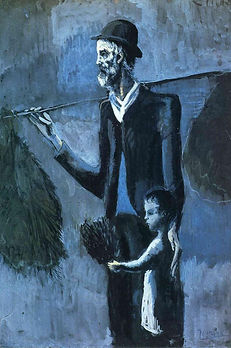
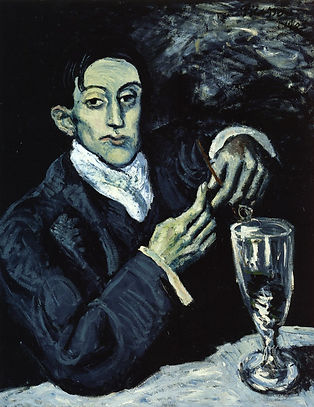
Portrait of Angel Fernández de Soto, 1903
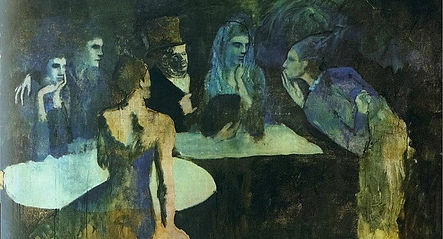
Les Noces de Pierrette, 1905
Picasso created this work during the most challenging period in his life, he was suffering from poverty, and Picasso created this painting in the transition from the blue to the rose period.
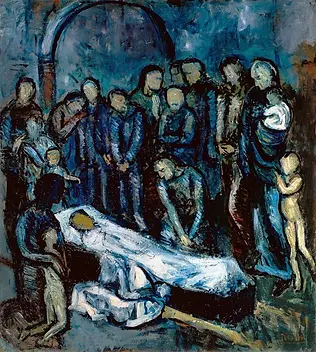
Le Mort, 1901
The death of Picasso's dearest friend had been a nightmare for him for a long time.

Le Repas de l’aveugle (The Blind Man’s Meal), 1903
Le Marchand de gui (The Mistletoe Seller), 1902-03